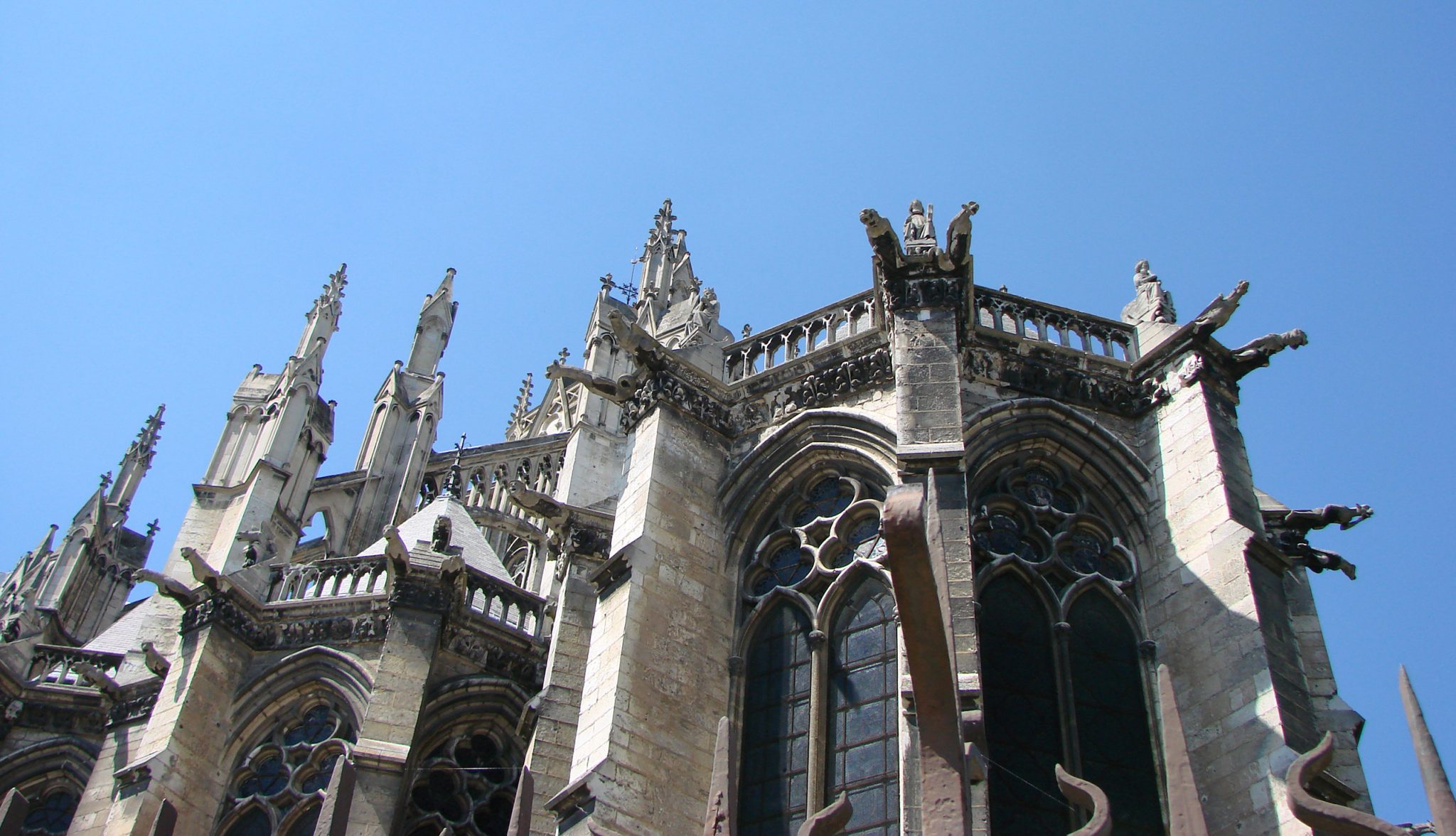The feeding of the 5,000 notwithstanding, the founder of Christianity never seemed all that enamoured with large-scale public worship. “When thou prayest, enter into thy closet, and when thou hast shut thy door, pray to thy Father which is in secret; and thy Father which seeth in secret, shall reward thee openly.”
It is to the One True Church, and certainly not to the teachings of the New Testament, that we owe the magnificence of medieval cathedrals. “The dull mind rises to truth through that which is material,” wrote Suger, abbot of St Denis in the 12th century. Equally, of course, the splendour which Suger helped to create enabled the dull mind to appreciate the power of bishops.
In contrast, as Simon Jenkins points out, the Orthodox Church presents interiors which are intimate rather than awe-inspiring, primarily places of prayer rather than proclamations of power and wealth. As for the Anglican cathedral of St Paul’s, Christopher Wren believed that “beauty is from geometry”. Not much about God there.
Simon Jenkins himself writes as an awe–struck agnostic. “All I know,” he explains, “is that many Christians hold to a faith that has led them to generous, noble and uplifting deeds. Where these include buildings of such loveliness I see no ‘embarrassment to reason’. I take comfort in our shared humanity and say a profound Thank You.”
For all the magnificent illustrations in this book, the text remains its essential heart, at once on account of Simon Jenkins’s crisp summaries of architectural history, and of his infectious enthusiasm for both splendour and detail. French Gothic in particular claims his heart. “In a Romanesque church worshippers bowed their heads in obedience to a dark mystery. In a Gothic church their eyes should rise to a supposed heavenly source of light.”
Spiritual aspirations apart, the urge for bishops to outdo their rivals was unrelenting, spawning buildings that infinitely exceeded the needs of the local population. At Chartres, completed in 1252, the nave was 37 metres tall; at Amiens (1270) 42 metres, and at Beauvais (1272) a record 48 metres. France, Simon Jenkins observes, “had nothing on the scale of Amiens cathedral until Louis XIV’s Versailles four centuries later.”
Size and statistics, of course, miss the point; and it would be quite wrong to imply that Simon Jenkins is over-impressed by them. In England he gives pride of place to Wells Cathedral, with special mention to the chapter house, where the palm vault is described as “the most exhilarating architectural composition in the country”.
We are also reminded that colour was the very essence of the Gothic style. Simon Jenkins would like to see the cathedrals and statuary of that period repainted, both inside and out.
Again and again in his commentaries he produces striking phrases, far-fetched sometimes, but always jogging the reader out of complacent veneration. Notre Dame, he finds, has the aura not of Parisian romance, but rather the opposite, of “a stern great-aunt with not a hair out of place”. At Rouen “the two towers stand detached from the central facade like two disapproving chaperons guiding a flirtatious teenager”.
Beyond France, at Regensburg, the cathedral “might suggest that the Saxons came south to teach the light-hearted Bavarians the seriousness of their faith.” At Trier the suggestion is of “a stout old man with a fashionable trophy wife”.
In England, St Paul’s puts Jenkins in mind of “a major-general covered in medals, overblown and slightly pompous”. He prefers Westminster Abbey, with its “aura of a timeless junk shop, a cross between Portobello Road and Highgate cemetery”.
And so on, through Austria, Switzerland, Italy, Malta, Russia, Scandinavia, and Holland. Only in Spain is there a suggestion, soon overcome, that Catholicism might be oppressive.
Jenkins rates all the cathedrals with a system of stars, ranging from five to one. For the record, only Amiens, Bourges, Chartres, Seville, Toledo, St Mark’s Venice, and Wells achieve the maximum five. Jenkins makes it abundantly clear, however, that there is inspiration to be found in every one of his 100 choices.
One may talk of the decline of religion, but the great cathedrals – those “embarrassments to reason” according 18th-century French philosophers – are still standing and in use, whereas so many medieval castles and palaces have crumbled into desuetude and ruin.
At the beginning of 15th century, the canons of Seville aimed to build “such a church as will make men mad”. Today, though, it is the apostles of reason who often appear dangerously deluded while the madness of Seville still inspires.
<em>Robert Gray is a writer</em>
<em>This article first appeared in the November 2021 issue of the Catholic Herald. <strong><a href="https://catholicherald.co.uk/subscribe/" target="_blank" rel="noreferrer noopener">Subscribe today.</a></strong></em>


